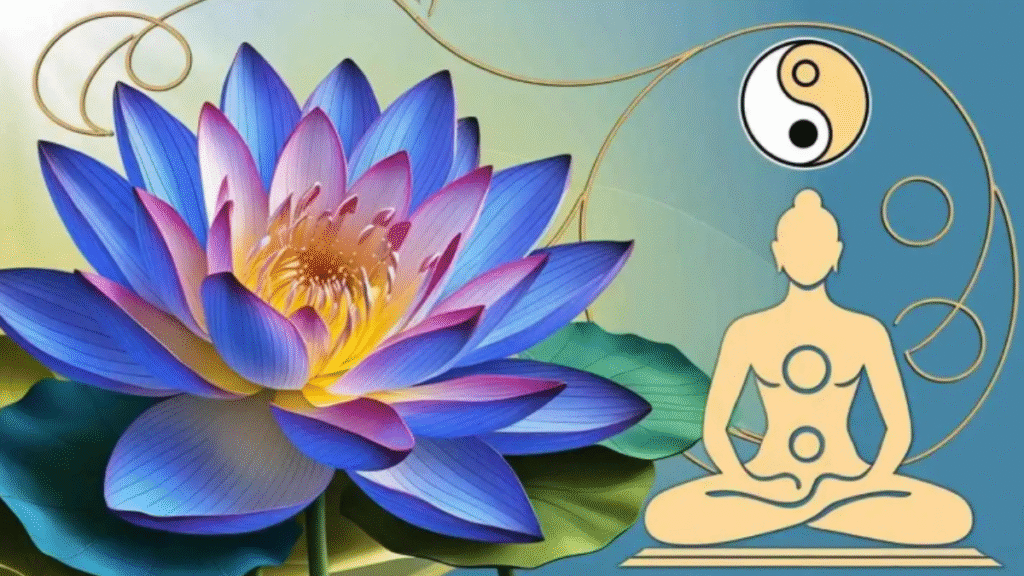The Blue Lotus (Nymphaea caerulea), also known as the Sacred Blue Lily of the Nile, is a legendary water lily that has captivated civilizations for thousands of years. Revered by ancient Egyptians, it was not only admired for its stunning beauty but also for its therapeutic and spiritual properties.
Today, blue lotus dried flowers are making a comeback in the world of herbal wellness, holistic therapy, and natural remedies. From teas and tinctures to incense and oils, people are rediscovering the profound effects of this ancient flower.
In this article, we will explore what blue lotus dried flowers are, their historical significance, how they’re used today, and how products like Egyptian blue lotus extract are adding a new dimension to holistic health.
What Are Blue Lotus Dried Flowers?
Understanding the Basics
Blue lotus dried flowers are the preserved petals and buds of the Nymphaea caerulea plant. The fresh flowers are harvested and carefully dried to retain their natural compounds, fragrance, and visual appeal. When dried properly, the flowers retain their distinctive blue-purple hue and sweet floral aroma.
Unlike common ornamental lotus flowers, Nymphaea caerulea is unique due to its active compounds — primarily apomorphine and nuciferine. These alkaloids are believed to be responsible for the flower’s psychoactive, sedative, and mood-enhancing effects.
Historical and Cultural Significance
Ancient Egypt and the Sacred Lily
The blue lotus flower held a sacred place in ancient Egyptian culture. Often depicted in tomb paintings, temple carvings, and papyrus scrolls, it was seen as a symbol of rebirth, enlightenment, and spiritual awakening.
Egyptians believed that the blue lotus emerged from the primordial waters at the beginning of time, making it a symbol of creation and life. It was commonly used in religious ceremonies and often placed in tombs as a guide to the afterlife.
The flower was also associated with the Egyptian sun god Ra. Since the petals open in the morning and close at night, the blue lotus was seen as a metaphor for the cycle of life and the journey of the soul.
Uses and Benefits of Blue Lotus Dried Flowers
How People Use It Today
Today, blue lotus dried flowers are used for both their aesthetic and therapeutic properties. They can be used in various forms:
1. Blue Lotus Tea
Soaking dried petals in hot water creates a mild, soothing tea that promotes relaxation. Many users report feeling calm, slightly euphoric, and more connected to their inner thoughts.
2. Smoking and Vaping
When mixed with other herbs or used alone, dried blue lotus can be smoked or vaped. This method is often used to experience its mild psychoactive effects, described as dreamy, meditative, or introspective.
3. Bath Soaks and Incense
Adding dried petals to bathwater or burning them as incense can create a deeply relaxing, spa-like experience that’s both aromatic and soothing to the senses.
Health and Wellness Benefits
While modern scientific research is still limited, centuries of anecdotal use and historical records suggest several potential benefits of blue lotus dried flowers:
Natural Relaxant
Thanks to its alkaloids, especially apomorphine, blue lotus is known for its mild sedative effect, helping relieve stress, anxiety, and tension.
Mood Enhancement
Some users report mild euphoria or a sense of mental clarity. This makes it popular for meditation or spiritual practices.
Aphrodisiac Properties
Historically, blue lotus was considered an aphrodisiac. Its use in romantic rituals and perfumes in ancient Egypt supports this claim.
Antioxidant Activity
Blue lotus is rich in flavonoids and other antioxidants that may support general well-being and cellular health.
Egyptian Blue Lotus Extract: Potency in a Bottle
Concentrated Power of the Flower
As the popularity of natural plant medicine grows, so does the demand for concentrated herbal extracts. Egyptian blue lotus extract is a modern solution that delivers all the benefits of the dried flower in a potent, easy-to-use form.
This extract is typically made using alcohol or glycerin to draw out the flower’s active compounds. The resulting liquid is much more concentrated than dried petals, meaning smaller doses can offer stronger effects.
How It’s Used
- Sublingually: A few drops under the tongue can quickly enter the bloodstream.
- Mixed with beverages: Often added to herbal teas, mocktails, or tincture blends.
- Topically: In some cases, it’s used in aromatherapy and massage oils.
Why Choose Egyptian Blue Lotus Extract?
Choosing an Egyptian blue lotus extract ensures you’re getting an authentic product with traditional roots. Egypt is still considered one of the best sources for blue lotus, thanks to its native climate and historical cultivation practices.
How to Choose Quality Blue Lotus Products
What to Look For
Due to its increasing popularity, many products claiming to be blue lotus are either misidentified species or mixed with fillers. Here’s what to consider:
- Botanical Name: Make sure the product is labeled Nymphaea caerulea.
- Sourcing: Look for sustainably harvested or organically grown products.
- Color and Aroma: High-quality dried flowers should have a vibrant blue-purple hue and a fresh, floral scent.
- Reviews and Lab Testing: Reputable suppliers often provide third-party lab results for purity and potency.
Precautions and Side Effects
Is Blue Lotus Safe?
Blue lotus is generally considered safe for moderate use. However, because of its mild psychoactive properties, caution is advised:
- Avoid combining with other sedatives or alcohol.
- Not recommended for pregnant or nursing women.
- Always start with a small dose to assess tolerance.
- Consult a healthcare professional if you’re on medication.
Conclusion
The beauty and mystery of blue lotus dried flowers go far beyond their appearance. From ancient temples to modern teacups, this sacred plant continues to inspire, heal, and connect people with a deeper sense of self and serenity.
Whether you prefer to enjoy its gentle effects through a calming cup of tea or a few drops of Egyptian blue lotus extract, this legendary flower offers a gateway to relaxation, spiritual connection, and holistic well-being.
As interest in ancient plant wisdom grows, the blue lotus is blossoming once again — inviting a new generation to explore its rich legacy and therapeutic potential.







